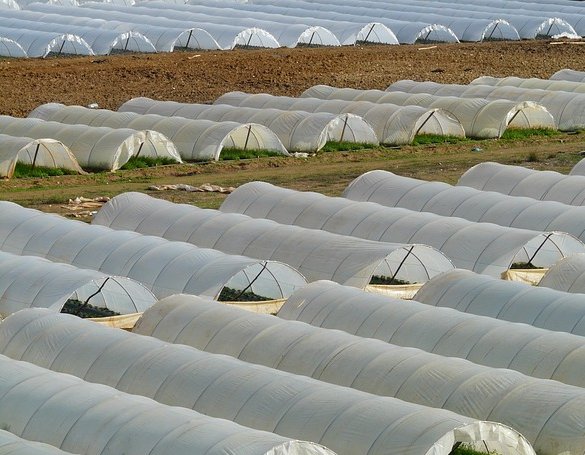How greenhouse effect works

The greenhouse effect is the process by which the earth’s surface and its lower atmospheres are warmed up. Its mechanism was first suggested by Joseph Fourier in 1824 and experimentally confirmed by John Tyndall in 1860 [1]. Since then, much effort has been devoted to fully understand its mechanism, causes and consequences.
We can easily understand the mechanism of the greenhouse effect if we know how an actual greenhouse keeps its inside warmer. In fact, the mechanism by which the warmed atmosphere of a planet warms its planet’s surface and lower atmosphere is somewhat different from the mechanism by which an actual greenhouse warms up. However, there is a stunning analogy between them.

Figure: Structure of a greenhouse [2]
An actual greenhouse warms up due to the reduced convective heat transfer. The glass of a greenhouse lets sunlight to go through them which in turn warms the ground inside. The warmed ground then acts as a heated body and emits longwave radiation (IR) thereby warming the air inside. However, the warmed air is not allowed to escape from the house as the house is almost closed. This stops the natural convection and prevents the inside from cooling. So, the eventual result is a warmer indoor.
The greenhouse effect is not a result of blocked convection but a process governed by heat-trapping gases in the atmosphere. The greenhouse gases in the atmosphere are transparent to the shortwave radiation (visible light) but opaque to the longwave radiation (IR). As a result, visible light reaches the earth surface. In this case, it is important to know that much of the solar radiation comes as visible light. A certain portion of the incident solar radiation is reflected back to the outer space by the earth’s surface. However, the remaining incident radiation warms the earth’s surface up. The hot earth’s surface acts as a black body and radiated its heat energy out. But this radiation from the earth is not allowed to escape directly from the earth’s atmosphere and is trapped by the heat-trapping gases (absorbed). The following figure illustrates how the greenhouse effect works.

How longwave radiation is trapped?
As we all know, earth’s average surface temperature does not exceed at least 50 ˚C. So, much of the earth’s surface heat radiates longwave radiation (not shortwave radiation). This can be easily understood by treating the earth’s surface as a black body whose temperature is always less than 50 ˚C. Unlike shortwave radiation, longwave radiation is absorbed by greenhouse gases even though some of the longwave radiation passes through the atmosphere. The greenhouse gases then re-emit the absorbed radiation to all directions including towards the earth. As a result, the earth’s temperature always remains at a higher temperature than that we would expect if there was no greenhouse effect. This warming effect is somewhat analogous to that of a greenhouse and therefore is referred to as the greenhouse effect.
The natural greenhouse effect is one of the key factors in determining the habitability of a planet. But human activities improve the greenhouse effect making the planet warmer than it was in the past. In next articles, we will discuss natural and enhanced greenhouse effect in detail.
